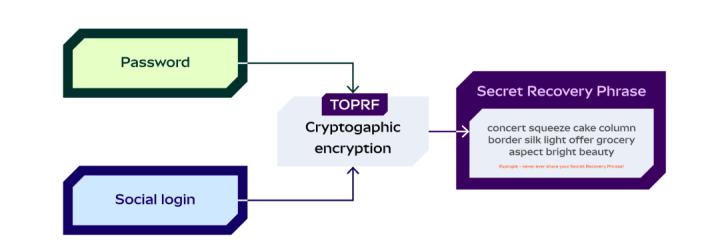With less than a week left before the highly anticipated "April 2nd Tariff Landing Day," this day, dubbed "Liberation Day" by the Trump administration, carries the ambition of reshaping the US trade landscape.
However, as media whispers grow, the policy drama's script seems less radical than expected. Meanwhile, the crypto market - a domain particularly sensitive to macroeconomic winds - is stirring under the tariff shadow.
A 'Mild Shift' on Tariff Landing Day?
The latest information suggests that the April 2nd tariff policy may not fully realize the grand blueprint previously outlined by Commerce Secretary Roudenick. He had envisioned a "three-layered" tariff system: based on reciprocal tariffs, supplemented by targeted taxes for specific industries and countries. However, recent rumors indicate potential concessions in the latter two layers. It's like a meticulously prepared feast ultimately served as a simple set meal - fewer condiments, but the main course remains.
Why this adjustment? The reason is not hard to guess. The Trump team knows tariffs are a double-edged sword. Since taking office, their trade policy has caused violent market fluctuations: US stock market value evaporated by trillions of dollars, supply chain pressures drove up prices, and eggs even became a "luxury item". Pushing tariffs to the extreme now could first put pressure on the US economy. Goldman Sachs economists warn that beneath this "mild posture" lurks the risk of "negative surprises". Market expectations for reciprocal tariff rates are around 9%, but Goldman estimates the actual figure could double to 18%. This gap is enough to make traders hold their breath, waiting for the other shoe to drop.
Meanwhile, the "Unfair Trade Practices Review Report" to be released on April 1st will be a crucial indicator. This report will reveal the US investigation's tendency towards trade partners, directly affecting the subsequent tariffs' pace and intensity. If the report strongly accuses some countries of "wool-pulling" behavior, Trump might seize the opportunity to escalate; if the tone is soft, the market might get a brief respite. Regardless, this report will be a preview of the "Liberation Day" narrative.
Trump's Calculation - Fair, Fair, or Damn Fair?
[Rest of the translation follows the same professional and accurate approach]
The Federal Reserve's Delayed Response and the Unfinished Bottom of US Stocks
The uncertainty of tariff policies not only affects trade patterns but also transmits to capital markets through inflation and monetary policies. Looking back at 2020, the inflation surge caused by the COVID-19 pandemic caught the Federal Reserve off guard. Initially, the Federal Reserve firmly believed inflation was "temporary," but by the end of 2021, Chairman Powell had to admit his misjudgment to Congress, abandoning the term "temporary" and subsequently launching a significant interest rate hike cycle. According to Bloomberg data (see Chart 1), the US economic policy uncertainty index soared to over 500 points in the early stages of the pandemic, reaching a historical peak. Although it subsequently declined, events such as the Russia-Ukraine conflict in 2022 and Trump's tariff policies in 2024 have again pushed the uncertainty index to hover around 200 points, far exceeding the average level of 1995-2019.
[Image 1]
The Federal Reserve's response to tariff impacts has also been slow. In recent years, supply chain pressures and price increases caused by tariffs have significantly raised inflation expectations, but the Federal Reserve has been more inclined to appease the market with dovish statements. However, such reassurance only brings short-term rebounds to US stocks, not a trend reversal. The reason is that the market's greatest uncertainty - the direction and intensity of tariff policies - remains unresolved. From Chart 1, we can see that the economic policy uncertainty index has been accompanied by significant US stock adjustments at historical moments like the "9/11 terrorist attacks," "Global Financial Crisis," and "Sovereign Debt Crisis." The current uncertainty level suggests that the US stock market's bottom may not have been reached yet. The market may need to wait for tariff policy clarification or more severe macroeconomic impacts to trigger a comprehensive reshuffle.
The recent performance of the S&P 500 further confirms these concerns. According to Bloomberg and MacroBond data, the S&P 500 has dropped 7.8% from its February high point, even reaching a 10% decline last week. Historical data shows that if the S&P 500 drops an average of at least 5% in the next five months, the US economy is likely to fall into a recession (yellow line in Chart 2).
Conversely, if the S&P 500 can recover lost ground in the next 4 to 5 months, it may avoid an economic downturn (black line in Chart 2). However, these data are just averages. If the economy truly enters a recession, US stocks could drop at least 20%. It's worth noting that market sentiment can sometimes amplify volatility. For example, in 2022, the S&P 500 dropped over 20%, but a recession did not occur, with the "expected recession" panic dominating the market's second half.
[Image 2]
Currently, the S&P 500 is at a critical crossroads. Chart 2 shows that if the economy avoids a recession, stocks should rebound quickly; but if recession risks escalate, selling pressure may continue. The uncertainty of tariff policies undoubtedly intensifies this uncertainty. If the policy is unexpectedly tough on April 2nd, market panic could further push down US stocks.
[Continued in the next section about the crypto market]







